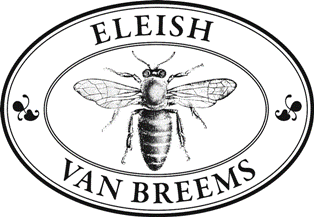Rhonda and I have long been under the looking glass spell of Swedish Baroque mirrors
and wanted to share with you some images of our favorite mirrors from this period
all made by the house of Precht.
The Baroque period was obsessed with optics and illusion and the mirrors that were made during this
time were wonders to be marvelled at. When it came to mirrors their manufacture was practically secret and their trade so precious that their sophisticated owners sought to show them off in fittingly elaborate frames. In 1674 a well known sculptor, mirror maker, carver and gilder in Germany named Buchard Precht was brought to Stockholm to work for the Crown under Sweden's Royal architect Niccodemus Tessin the Younger. Sadly, much of the important work he did for the Royal Palace was burned during the fire of 1697.
There are, however, quite a few remaining examples of works he and his workshop did for his main clients, the Church and Queen Hedvig Eleanora. His mirrors are among the most beautiful and accessible of his work and are sought out by collectors around the world.
To our modern eyes much of the Baroque furniture with its elaborate carvings and gilding can appear garish and heavy. Not so these elegant mirrors. Glass was so rare and expensive that frames of the period were expected to be exceptional to show the looking glass off...
Precht and his sons Christian and Gustaf made their frames decorative but always in ways to enhance the looking glass and to never over power or detract from it in any way. There is a symmetry, balance and a lightness that makes these mirrors pleasing to our contemporary eyes.
Precht accompanied Nicodemus Tessin the Younger on his great 1687 study trip to France and Italy in preparation for work on the new Palace. He was also very involved in counsel for the interiors of Drottingholm, pictured above, the home of Queen Hedvig Elenora. Drottiningholm is considered the dowager Queen's greatest architectural contribution to Sweden.
....Precht's alter at the Gustav Vasa Church is his baroque masterwork and homage to Bernini.
...Here we see carving details of the alter piece Precht made for the Storkyrkan,
(think Princess Victoria's wedding!) next to the Royal Palace.
Precht was a highly skilled ornamentalist, as can be seen in the carvings of this mirror made by his workshop.
His commissions were for the court and the highest level of Swedish aristocracy. To give you an idea of how valuable these mirrors were, David Hockney, in his book "Secret Knowledge" sights an interesting fact regarding the effects of the great French minister Colbert. A Venetian mirror from Colbert's inventory was valued at 8,016 livres while a Raphael painting was only valued at 3,000. livres. Prices for Precht mirrors today are recorded at auctions as selling from $60,000. to $169,000.
The Precht workshop mirrors were made in the Gamla Stan section of Stockholm in the vicinity of the Royal Palace on the corner of the Lilla Nygaten and what today is called Schonfeldsgrand. Before the names in the Gamla Stan were changed in 1885 this was called Precht's Grand, which means Precht's Alley. We can still walk in the footsteps of Buchard Precht today!
Precht perfected a way of gilding ornamented lead and this is what is holding the glass
frames together on the mirrrors you see here. Verre Eglomise...
Baltic blue glass was sometimes used in the mirrors and because the blue glass
was a rarity unto itself these mirrors are often the most simple.
This mirror seems reminiscent of the magic mirrors popularized in literature and fairytales of the period, most notably Handel's opera Semele. To see what a real Baroque mirror in action is capable of, watch this clip from Jean Cocteau's La Belle et Le Bete... Belle enters the Castle and finds the Mirror. (forward to 2:24 to view the mirror)
"Je suis votre mirroir ma Belle..."
Who wouldn't love to have one of these around the house?
Less heavy then their French and Venetian counterparts, Precht Mirrors are magic to us
at Eleish van Breems! We hope you agree!
Photos of the Precht Mirrors used in this post came from the following sources: Christie's ,




















